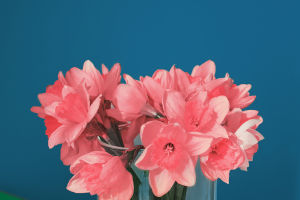Carnations, scientifically known as Dianthus caryophyllus, are cherished for their lush, ruffled petals, vivid hues, and captivating aroma. These timeless flowers have been treasured for generations, symbolizing various emotions and sentiments, making them a favored choice in gardens and floral displays.
Whether you’re a passionate gardener or simply a flower enthusiast, familiarizing yourself with the distinct traits and care needs of carnations can elevate your gardening journey.
Unique Traits
As perennial plants in the Dianthus family, carnations can grow between 12 to 24 inches tall. They boast an impressive variety of colors, including pink, red, white, yellow, and purple. The flowers’ distinctive frilled petals emit a pleasant, clove-like fragrance, making them a popular option for bouquets and decorative arrangements.
Typically blooming in spring, carnations can continue to produce flowers into summer, offering a vibrant splash of color for an extended period. They hold deep cultural meanings, often symbolizing love, admiration, and distinction, and are frequently featured in celebrations ranging from weddings to graduations.
Ideal Growing Conditions
For optimal growth, carnations prefer well-draining soil with a slightly acidic to neutral pH. They thrive in full sun but can tolerate partial shade, particularly in warmer climates. Here are essential factors for ensuring healthy growth:
Soil: A mixture of potting soil and compost enhances drainage and provides essential nutrients. Good drainage is vital to prevent issues like root rot.
Watering: While they require consistent moisture, it’s crucial to avoid overwatering. Allow the soil to dry out slightly between watering sessions to encourage healthy root systems.
Fertilization: During the growing season, apply a balanced fertilizer every four to six weeks to promote vibrant blooms and robust growth.
Propagation Methods
Carnations can be propagated through seeds, cuttings, or division. To sow seeds, either start them indoors before the last frost or plant them directly in the garden after frost risks have passed. For cuttings, choose healthy stems, make a cut just below a node, and place them in a suitable potting mix. Keeping the soil consistently moist will encourage root development within a few weeks. Dividing established plants every few years can also stimulate new growth and flowering.
Managing Pests and Diseases
Although generally resilient, carnations can face challenges from pests such as aphids, spider mites, and thrips. Regularly inspect your plants for any signs of infestation and treat them with insecticidal soap or neem oil if needed. Be aware of potential diseases, including powdery mildew and root rot. Ensuring proper spacing, promoting good airflow, and avoiding overhead watering can help mitigate these issues.
With their exquisite beauty and variety of colors, carnations make a splendid addition to any garden. Whether used in bouquets or admired in the landscape, these versatile flowers can bring elegance and joy to any setting. Lykkers, by providing the appropriate care and growing conditions, you can enjoy a stunning display of carnations throughout their blooming season.


